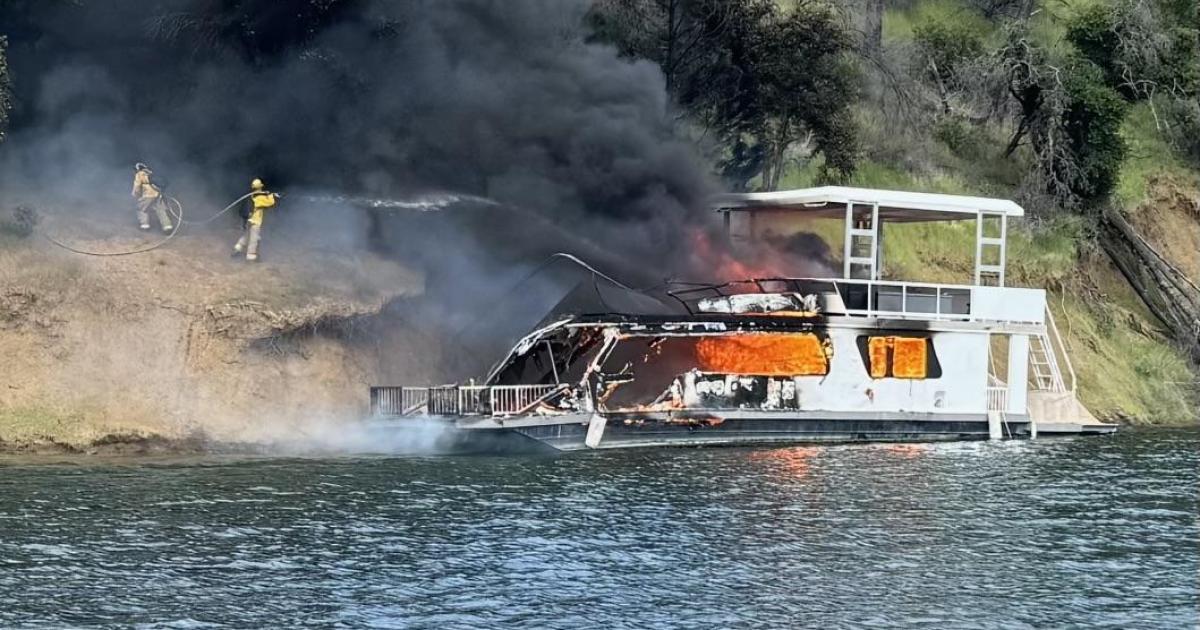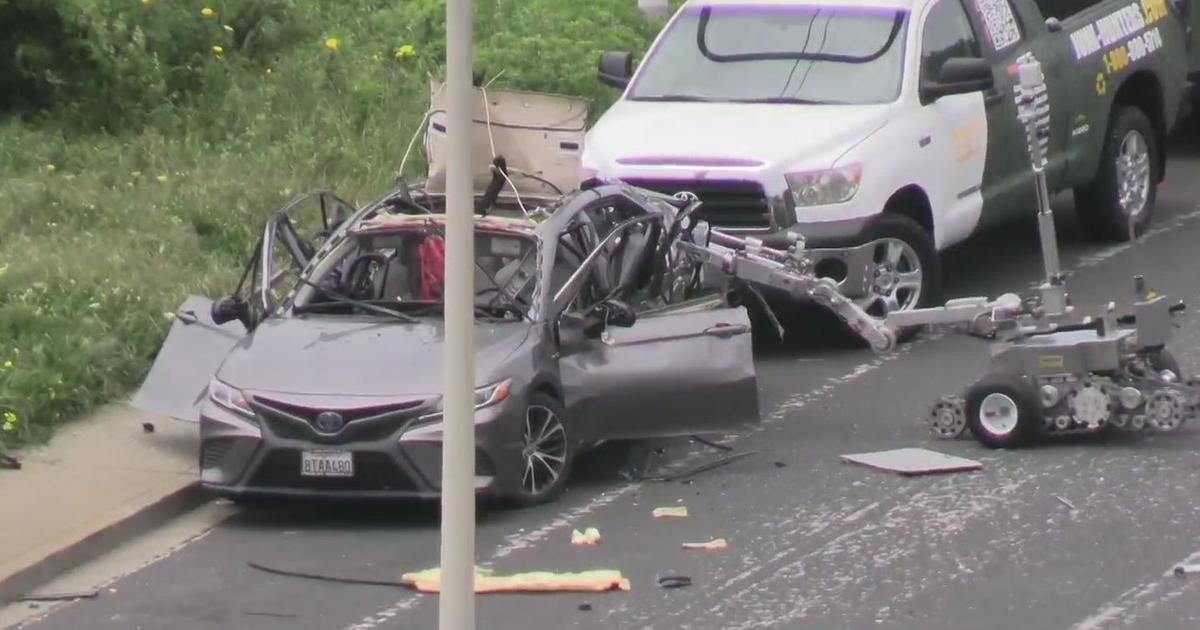Power Outages: Thousands Of Santa Rosa Residents Face Night Lit By Candlelight
SANTA ROSA (CBS SF) -- Nearly 50,000 Wine Country homes and businesses began going dark Wednesday morning in the latest round of Pacific Gas and Electric power outages, but hours later weather conditions had improved enough to allow the cancellation of planned blackouts in five other Northern California counties.
Residents in Napa and Sonoma counties began losing electricity at about 7 a.m. Approximately 4,800 customers -- roughly 15,000 residents -- in the eastern areas of Santa Rosa lost their electricity. Power was also cut farther north in portions of Mendocino, Lake and Yolo counties, said Katie Allen, a PG&E spokeswoman.
Nearly 170,000 homes and business lost electricity in the first wave of outages Wednesday morning. But weather conditions improved enough by Wednesday afternoon to allow the utility to cancel planned power outages in El Dorado, Nevada, Placer, Sierra, Yuba counties and western Sonoma County.
FOR THE LATEST ON THE OUTAGES: CBSN BAY AREA – KPIX 5 24/7 Digital News Channel
The National Weather Service's Red Flag Warning for the North Bay and the East Bay hills went into effect at 4 a.m. with winds predicted to pick up to 20-30 mph with gusts topping 60 mph at the highest peaks. The eastern winds would also bring with them plunging humidity levels.
As of 6 a.m., a 71 mph gust had been clocked at Mt. St Helena, 53 mph on Mt. Diablo in the East Bay and 33 mph at the Napa Airport.
Winds and low humidity levels are not the only forces of Mother Nature at work in Northern California. The region has also endured near drought-like conditions.
A virtually rainless fall has left brush bone-dry. One Napa County reporting station hasn't seen a measurable drop of rain since mid-September — the first time that's happened since 1905, said Scott Strenfel, PG&E's principal meteorologist.
The northern Sierra Nevada has seen a fraction of an inch of rain in the past two months instead of the usual 5 inches, he said.
"This lack of rain is keeping the threat of fire very real, this late in the season, in many areas," Strenfel said.
PG&E said those conditions forced the utility to move ahead with its fifth widespread planned outage in less than two months to prevent its power lines and equipment failures from igniting deadly and destructive wildfires.
However, the outages have sparked outrage from customers -- some who have endured 4-5 of the power shutdowns -- state regulators and lawmakers who grilled PG&E CEO Bill Johnson during questioning at Sacramento hearings this week.
Currently, PG&E is under Chapter 11 bankruptcy protection -- an action taken when the utility had 100s of millions of dollars in lawsuits filed against it in the wake of wildfires stemming back to 2017 that were caused by its power lines and equipment.
Among those blazes was the deadly Camp Fire that roared through Paradise last year, destroying much of the town and killing 85 people.
During a power outage last month, the utility's lines and equipment were still discovered to be the possible source of several fires in the Bay Area including the Kincade Fire which burned more than 77,000 acres and forced 200,000 Sonoma County residents from their homes.
The planned blackout would be the latest in a series of massive outages by the country's largest utility, including one last month that affected nearly 2.5 million people and outraged local officials and customers who accused the utility of overkill and using blackouts as a crutch because it failed to harden its equipment to withstand fire weather.
The outages have been "terribly disruptive" and PG&E is taking steps to avoid them in the future but at the moment, "we won't roll the dice on public safety," company CEO Andy Vesey said.
Meanwhile, California's utility regulators are demanding answers from wireless, internet and landline providers whose equipment failed during previous outages, leaving hundreds of thousands of people without a way to get emergency alerts or make 911 calls.
Statewide, about 3% of cell towers failed at one point in late October, but the numbers were much higher in northern counties, such as Marin, which had 57% of its towers out and Sonoma, which had 27% out.
In some cases, public safety workers had to drive for an hour to see if they needed to check in, said John Kennedy of the Rural County Representatives of California. Fire departments lost contact with firetrucks and some had to rely on radios because download speeds were so slow or out of service, he said.
More than 450,000 people were left without communications, according to the group.
Exasperated members of the California Public Utilities Commission reminded representatives of Sprint, AT&T, Verizon and other companies ordered to the meeting on Wednesday that customers pay for reliable service.
"The customers need to know where there's coverage and where there's not, and the local responders need to know," said Commissioner Martha Guzman Aceves.
"Next fire season cannot, cannot look like this one," said commission President Marybel Batjer.
Consumer advocates have urged the commission to establish backup power requirements and make the companies provide detailed information about outage locations.
On Wednesday, California Sen. Steve Glazer and Assemblywoman Rebecca Bauer-Kahan proposed legislation that would require mobile phone companies to provide at least 72 hours of backup power at cell towers.
Verizon, T-Mobile and AT&T officials said they would disclose outage information immediately, but did not commit to the 72 hours backup regulation.
They also criticized PG&E, saying the utility's changing outage forecasts made it difficult to prepare adequately. For example, AT&T deployed 60 generators to the San Francisco Bay Area only to learn that the suburbs were no longer affected by the current power outage, said Jeff Luong, a vice president with AT&T.
"It's impossible to react to that type of information," he said.
Lake County Supervisor Moke Simon said AT&T's network went down right away during an outage in late October, risking the county's sewer and alarm systems. There was no backup in place, he said.
"That really put us in a dire straits situation," he said.
Batjer told communications company representatives she was surprised by their lack of preparation given California's long history of wildfires.
"It's sort of stunning that you go, 'Well, we just learned a lot in the last three weeks,'" she said.
The California Governor's Office of Emergency Services has called the companies' level of engagement unacceptable at a time when redundant infrastructure is necessary.
In written responses in advance of Wednesday's meetings, the companies said they communicated with authorities but the outages were unprecedented in scope. The companies said they are improving backup power sources but added that doing so might not be possible in some locations and that generators are not always safe.
Comcast said that its network "like any modern network, fundamentally relies on commercial power to operate."
© Copyright 2019 CBS Broadcasting Inc. All Rights Reserved. The Associated Press contributed to this report.



